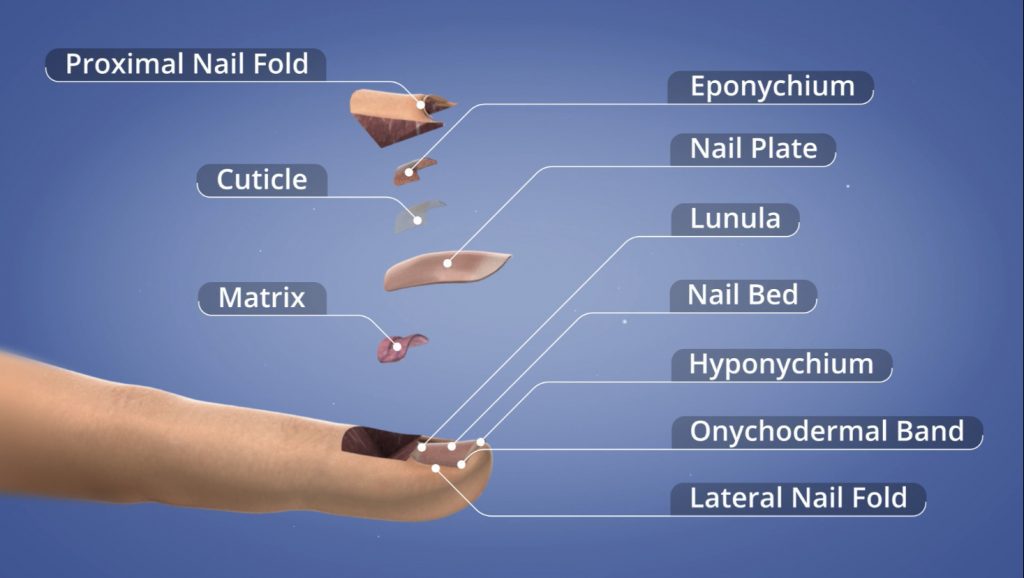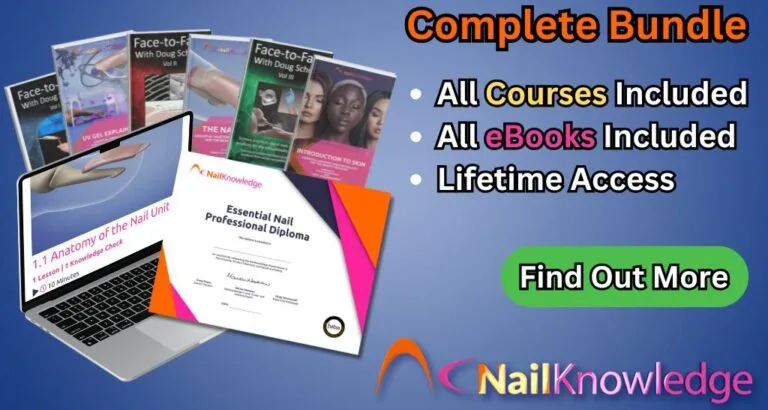Nail services e.g. manicure, nail enhancements etc. have evolved over decades. In each country they have evolved in many different ways. What one country believes to be safe another doesn’t. What one country uses for the nail unit terminology another country uses something different.
Os serviços tradicionais de unhas evoluíram de diferentes maneiras desde a primeira metade do século XX e, durante esse período, não estiveram associados à profissão médica. Eles têm sido puramente cosméticos, usando produtos regulamentados pelas Regulamentações de Cosméticos de cada país.
A terminologia das áreas e estruturas da unidade de pregos (mesmo esse sendo um termo relativamente novo) evoluiu com o crescimento do setor global e é usada na educação para descrever e explicar a finalidade e a função de cada uma delas.
Não houve aceitação global dos termos, portanto, as descrições de áreas e estruturas são diferentes em todos os lugares! Quem e o que está correto?
The main commercial aspect of the variety of nail services has not strayed into the medical side; it is a cosmetic service (unless individual nail professionals are qualified to diagnose and treat minor conditions of the nails and skin, which is something that is gaining in popularity, but needs additional qualifications.)
So, why is the cuticle no longer the clear frame of skin at the base of the nail plate? Why is the eponychium no longer visible but hidden under the proximal nail fold? Why is the nail root now the matrix?
Has the nail unit evolved into something else? No, it hasn’t.
Ao longo das décadas, a terminologia evoluiu, geograficamente, para o que é, em grande parte, uma adivinhação. Essa terminologia foi ensinada por muito tempo e é difícil mudar!
In a recent conversation with Doug Schoon, who published a cross-section of the nail unit with different terminology and labels, he explains – “nail professionals are not medically trained and there is such confusion with the parts of the nail unit anatomy. It is time that the professional nail industry catches up with the accurate terminology, structure, function and positioning of the nail unit structures that are in-line with the medical A&P.”
Essa pode não ser uma terminologia da qual os clientes precisem estar cientes, mas certamente é algo que os profissionais de unhas precisam entender e consultar. Esse entendimento tornará o profissional de unhas muito mais eficiente em seus serviços. Mas é uma montanha difícil de escalar, pois muitos não concordam com a ciência comprovada: a base de todo o ensino do NailKnowledge.

Let’s take ‘cuticle oil’: the accepted benefit of this is to help treat the skin at the base of the nail that is living and not necessarily the dead layer of skin adhered to the nail plate. How can brands change their product names to ‘Proximal Nail Fold Oil’? It doesn’t really have a ‘ring’ to it! So, you may have noticed that some brands have migrated to ‘Nail Oil’.
Os consumidores/clientes precisam de uma explicação com curadoria que repercuta neles. MAS, como profissionais de unhas, precisamos ter uma compreensão profunda da unidade de unha, de suas estruturas e funções. É hora de começar a incentivar uma aceitação precisa e global da terminologia da unidade ungueal.
Todos os países concordam com a terminologia de A&P para praticamente todas as outras estruturas do corpo humano: ossos, músculos, circulação sanguínea, sistema endócrino etc. Por que não a unidade das unhas?
At NailKnowledge we use correct and accurate terminology, positioning and function. It’s time to stop the confusion and agree with the medical profession, anatomists and physiologists, and not make it up as we go along!


